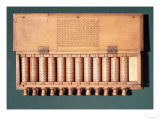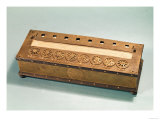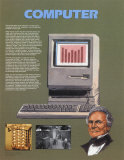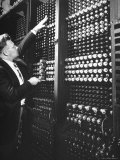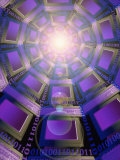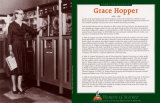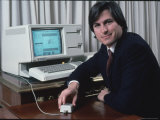|
|
|
|
|
|
|
|
|
BOOKS ABOUT COMPUTERS & COMPUTER CAREERS |
|
|
|
|
|
|
|
|
|
|
|
|
|
|
|
|
|
|
|
|
|
 |
|
|
People, Devices and Events in the Development of Computers -
for the social studies, science, and vocational education classroom, school guidance counselor.
|
|
social studies > internet > COMPUTER HISTORY | computers < vocational education < science
|
|
Compute: from the Latin computare: to consider, and computer, the mechanical means of manipulating data according to a set of instructions.
The earliest mechanical calculating devices include the abacus, the astrolabe and the Antikythera Mechanism
|
|
|
Mathematician John Napier developed an acabus, or calculating rods, for simplifying multiplication and division problems into simpler addition and subtraction calculations. They are popularly known as Napier's Bones.
• John Napier: Logarithm John
|
|
|
|
French mathematician Blaise Pascal constructed a mechanical calculator for addition and subtraction, called the Pascaline. Because of its expense, the Pascaline never became more than a status symbol and toy.
|
|
|
|
The Computer
Inventions that Changed
the World -
Most people think of the computer as a fairly recent invention. But the first “computers” were actually built hundreds of years ago!
Many experts say the very first computing device ever made was the abacus, which was in use more than 2,000 years ago. In 1642, the mathematician Blaise Pascal invented a device that used gears and dials to solve complex addition problems. But the true “father” of the modern computer was a brilliant math teacher from England named Charles Babbage. Babbage, who is shown here, designed a machine in 1833 that was more than a century ahead of its time. He called his machine a “difference engine,” and it performed long mathematical calculations. Then he thought up and designed a machine that would perform even harder calculations. He called it an “analytical engine.” It stored information in a “memory” and was operated by means of cards with holes punched in them. But it was so complicated that the best engineers of the time could not build it.
The next great advance in computers was the construction of ENIAC –the Electrical Numerical Intergrator and Calculator – in 1946. ENIAC was the first general-purpose electronic digital computer. Altogether, it was 100 feet long and teen feet tall, and it weighted 30 tons. In the 1970s, the introduction of the microchip helped reduce the size of computers. Thanks to microchips, today's desktop computers can do much more than the room-sized ENIAC, and they can do thing many times faster.
Today, it is hard to imagine a world without computers. Computers are used in many simple, everyday routines, from making a telephone call, to going thorough supermarket checkout line, to putting money in a bank account. And more complicated activities, such as operating weapons systems, controlling air traffic, and monitoring surgical procedures, are also dependent on computers. Computer networking allows for nearly instantaneous worldwide communications and access to information. And computers have speeded up innovations in nearly every field.
• more “Inventions that Changed the World” posters
|
|
|
|
ENIAC is short for Electronic Numerical Integrator And Computer. ENIAC, designed by John Mauchly and J. Presper Eckert, was a room size computer built to calculate artillery firing table. It was completed in 1946 at the cost of nearly $500,000.00
|
|
|
|
The Mark III was the first computer to appear on TIME cover.
|
|
|
|
|
|
|
|
|
|
|
|
|
|
|
Augusta Ada Byron, Countess of Lovelace
b. 12-10-1815; England
d. 11-27-1852
Ada Lovelace was the only legitimate daughter of Lord Byron. She received early training as a mathematician and is considered to have written the first computer program in her correspondence with Charles Babbage about his early mechanical general-purpose computer, the analytical engine.
• Ada, Countess of Lovelace
|
|
|
|
|
|
|
|
|
|
Steve Jobs
b. 2-24-1955; SF, CA.
Steve Jobs and Steve Wozniak cofounded Apple Computer, Inc. (now Apple, Inc.) in the late 1970s. Apple designs and manufactures consumer electronics and software such as Macintosh computers, the iPod and the iPhone; and Mac OS X operating system, iTunes, iLife, iWork, and Final Cut Pro.
Currently (mid 2009) Jobs is on health leave from Apple.
|
• Apple, fruit poster
• Adam & Eve print
|
|
|
|
John Opel
b. 1925; Kansas City, MO
John R. Opel was president and CEO of IBM (International Business Machines) that chose Bill Gates MS-DOS for their operating system.
|
|
|
|
Bill Gates
b. 10-28-1955; Seattle, WA
Bill Gates is chairman of Microsoft, a company he founded with Paul Allen, in 1975.
|
|
|
|
Marc Andreessen
b. 7-9-1971; Cedar Rapids, IA
Marc Andreessen is software engineer best known as co-author of Mosaic, the first widely-used web browser, and founder of Netscape Communications Corporation.
|
|
|
|
Steve Case
b. 8-21-1958; Honolulu, HI
Steve Case was the co-founder and former chief executive officer and chairman of America Online (AOL).
|
|
|
|
Andrew Grove
b. 9-2-1936; Budapest, Hungary
Andrew Grove, businessman and scientist, was one of the earliest employees of Intel Corporation and played key leadership roles in its success.
|
|
|
|
Jeff Bezos
b. 1-12-1964; Albuquerque, NM
Jeff Bezos is the founder, president, CEO and board chairman of Amazon.com
• attended Montessori school
|
|
|
|
|
|
|
|
|
|
previous page | top
|
|
I have searched the web for visual, text, and manipulative curriculum support materials - teaching posters, art prints, maps, charts, calendars, books and educational toys featuring famous people, places and events - to help teachers optimize their valuable time and budget.
Browsing the subject areas at NetPosterWorks.com is a learning experience where educators can plan context rich environments while comparing prices, special discounts, framing options and shipping from educational resources.
Thank you for starting your search for inspirational, motivational, and educational posters and learning materials at NetPosterWorks.com. If you need help please contact us.
|
|
|










